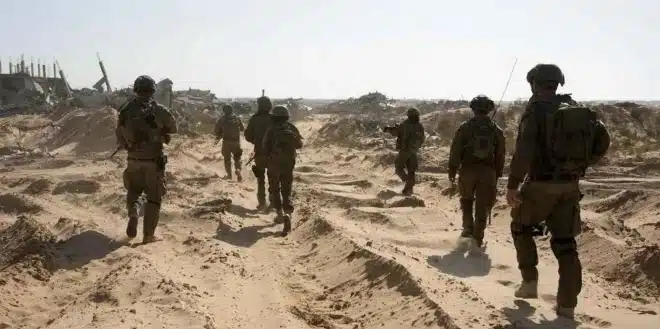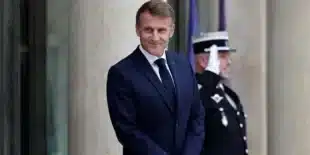Israeli authorities have initiated the process of calling up tens of thousands of military reservists, as preparations intensify for a broader military campaign in the Gaza Strip. This development comes at a time when tensions are rising between Prime Minister Benjamin Netanyahu and Qatar, a key mediator in the stalled ceasefire talks.
According to local media, the reservists are being summoned to take over duties currently held by active-duty personnel and conscripts in both Israel and the West Bank. This shift would allow more experienced combat forces to redeploy to Gaza. Although the Israeli military has not officially confirmed these reports, several individuals linked to journalists have already received call-up notifications.
A meeting of Israel’s security cabinet is expected to take place on Sunday to formally approve the next phase of the Gaza offensive. The campaign resumed on March 18, ending a two-month ceasefire that began in January and was jointly brokered by Qatar, Egypt, and the United States. Efforts to reestablish a truce have since stalled, raising the prospect of prolonged military engagement.
Diplomatic Fallout and Accusations Between Israel and Qatar
Prime Minister Netanyahu criticized Qatar for what he described as inconsistent behavior in the mediation process. He accused the Gulf state of simultaneously supporting ceasefire efforts while maintaining links to Hamas. His comments were posted on social media, where he challenged Qatar to clarify its position in the conflict.
The Qatari foreign ministry issued a response dismissing the remarks as inflammatory and lacking in diplomatic responsibility. Tensions between the two countries have been exacerbated by political pressure within Israel, where Netanyahu’s coalition depends heavily on hardline factions pushing for continued military action.
Adding to the humanitarian strain, Israel has blocked the entry of aid into Gaza since early March. International organizations have raised alarms over the deteriorating conditions, warning of severe consequences for civilians if relief supplies remain restricted.
Hostage Video Highlights Ongoing Crisis
On Saturday, Hamas released a video showing a hostage who was identified by Israeli and international media as Russian-Israeli national Maxim Herkin. The footage, which runs for approximately four minutes, shows Herkin with visible injuries to his head and arm. He is seen speaking in Hebrew and suggests he was wounded in an Israeli airstrike.
Hamas continues to hold 58 hostages, according to the Israeli military, with 34 believed to be dead. The militant group is also in possession of the remains of an Israeli soldier killed during the 2014 Gaza conflict. In the video, Herkin echoes similar appeals made by other captives in previously released footage, urging pressure on the Israeli government to facilitate their release.
The hostages’ families have called for widespread media coverage of the video to increase pressure on Israeli leadership. However, concerns persist that intensifying military action could place these individuals at even greater risk.
Public Protests and Civilian Casualties Mount
In Tel Aviv, thousands of demonstrators gathered outside the Ministry of Defense demanding stronger efforts to rescue the remaining hostages. Many participants questioned the rationale behind the ongoing military operation and expressed fears that further escalation could be counterproductive.
Organizations representing the families of the captives warned that ramping up the offensive may directly endanger those still in captivity. Despite this, Israeli authorities continue to emphasize that military pressure is a necessary component of their strategy to compel Hamas into negotiations.
Meanwhile, in southern Gaza, an overnight airstrike on the Khan Yunis refugee camp killed 11 people, including three young children. Gaza’s civil defense service reported that the attack targeted the Al-Bayram family residence around 3:00 a.m. local time. Among the victims were two one-year-old children and an infant approximately one month old.
Eight of the deceased were confirmed to be members of the same extended family. The Israeli military later acknowledged the strike, stating that it was aimed at a Hamas operative. Emergency crews and local residents worked through the night to search the debris for survivors, using flashlights and their hands to sift through the rubble.
Worsening Outlook as Humanitarian Access Remains Blocked
The Gaza health ministry reported that the renewed Israeli operations have resulted in 2,396 deaths since March 18, increasing the overall death toll from the conflict to over 52,000 since the war began in October 2023. Continued restrictions on humanitarian aid, combined with ongoing airstrikes, are compounding the crisis in the enclave.
International pressure is mounting on all parties to resume negotiations and mitigate the risks to civilians and hostages alike. However, with both sides holding firm and diplomatic channels strained, the likelihood of an immediate breakthrough remains limited.


